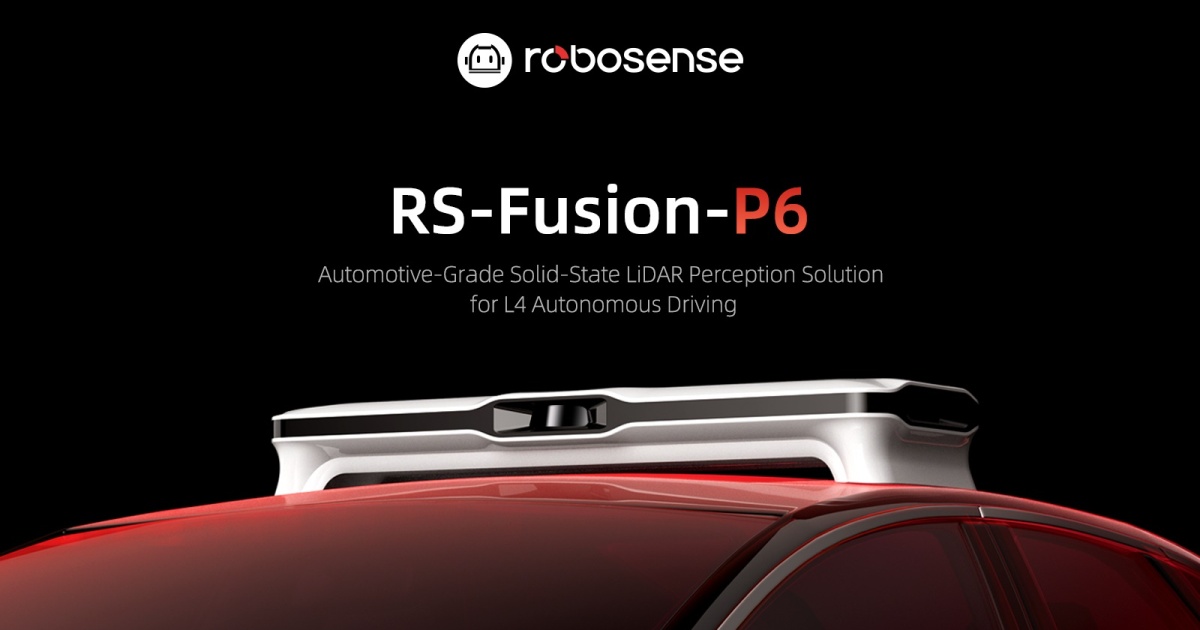
I don’t know about you, readers, but LiDAR interests the heck out of me. (I’ve published several pieces about LiDAR capabilities, be it pertaining specifically to Quanergy’s critical infrastructure support, Velodyne’s LiDAR software, or how Neara automated its LiDAR classification for incredible efficiency boosts.) But for any who may not be LiDAR-versed, here’s the long-story-short of it: LiDAR stands for Light (or Laser) Detection and Ranging. The term was coined and made well-known between the 1960s and 1980s, and the tech itself involves remote sensors that use laser light sent from transmitters to reflect objects within a setting. Once the reflected light is detected, it’s then used to develop smart mapping of said setting. (e.g. warehouse facilities, surveyings of land for forestry or farming, for vehicular travel, etc.)
Let’s stay on that last example as we cover recent news from RoboSense, the savvy provider of Smart LiDAR Sensor Systems. Earlier this month, RoboSense announced the launch of its first automotive-grade, solid-state LiDAR perception solution for L4 autonomous driving.
For context, Levels 0–2 (L0 – L2) indicate zero automation/solely human manual control, then an automated driver assistance system, and then partial automation, i.e. ADAS in terms of steering and acceleration performance, but the human driver monitors the tasks and can take control at any time. Level 3 (L3, like what Ford Motor Company shifted its focuses on recently) involves conditional automation in the form of environmental detection capabilities; the vehicle performs most driving tasks, and human override is still required.)
And then we arrive at L4: This is high automation. With L4, the vehicle’s systems are fully designed to perform all driving tasks under specifically laid-out circumstances. For L4, geofencing is required. (Human override is still an option.) L4 is what RoboSense is homing in on with its RS-Fusion-P6 (P6).With RoboSense’s advanced software and hardware support, P6 provides precise and intelligent environmental perception capabilities (like with L3) but also enables autonomous vehicles to navigate through series of complex driving scenarios with ease. Per RoboSense, this will “help reduce costs, increase on-the-road efficiencies, and promote the rapid implementation of large-scale L4 autonomous driving commercial operations.”
But how specifically does the LiDAR perception element factor into this solution? Simple. The P6 integrates software based on AI technology, as well as hardware based on two-dimensional micro-electromechanical systems (MEMS) scanning technology. The P6’s latter provides high-performance perception functionalities; it scans full-scene environments from start to finish, making it ideal for a range of driving scenarios (e.g. congested city streets, long highways, etcetera). Equipped with four M-series solid-state LiDARs, the P6 offers dynamic and high-resolution long-distance detection and a 360-degree horizontal range. With these core technologies, the P6 can quickly process traffic and safety conditions (and send feedback to the autonomous driving control center), allowing the vehicle millisecond-level reactions to any necessary changes within shifting driving environments.
Okay, so perhaps saying “Simple.” was a bit of a stretch. Nevertheless, simple or not, RoboSense’s P6 works.
Additionally, the P6 is equipped with RoboSense’s real-time point cloud perception software, Perception. Perception’s intelligent processing allows the P6 to accurately process complex traffic environment info in challenging situations (i.e. like in accident zones and in inclement weather). The P6’s LiDAR identifies pedestrians, road signs, EVs and other cars, trucks, and various obstacles while simultaneously tracking speeds, acceleration behaviors, and locations.
Suffice it to say, the P6’s LiDAR picks up a lot; nearly more than this article can reasonably list.
Overall, RoboSense is demonstrating its deep understanding of the autonomous driving industry’s pain points and its needs for rapid evolution. Those adopting the P6 will experience a heightened sense of high-performing reliability; industries expected to benefit from the launch of the P6 and its massive LiDAR-ferried advantages include transportation, logistics, and mobilities.
Even more LiDAR info from RoboSense can be found here.
Edited by
Greg Tavarez